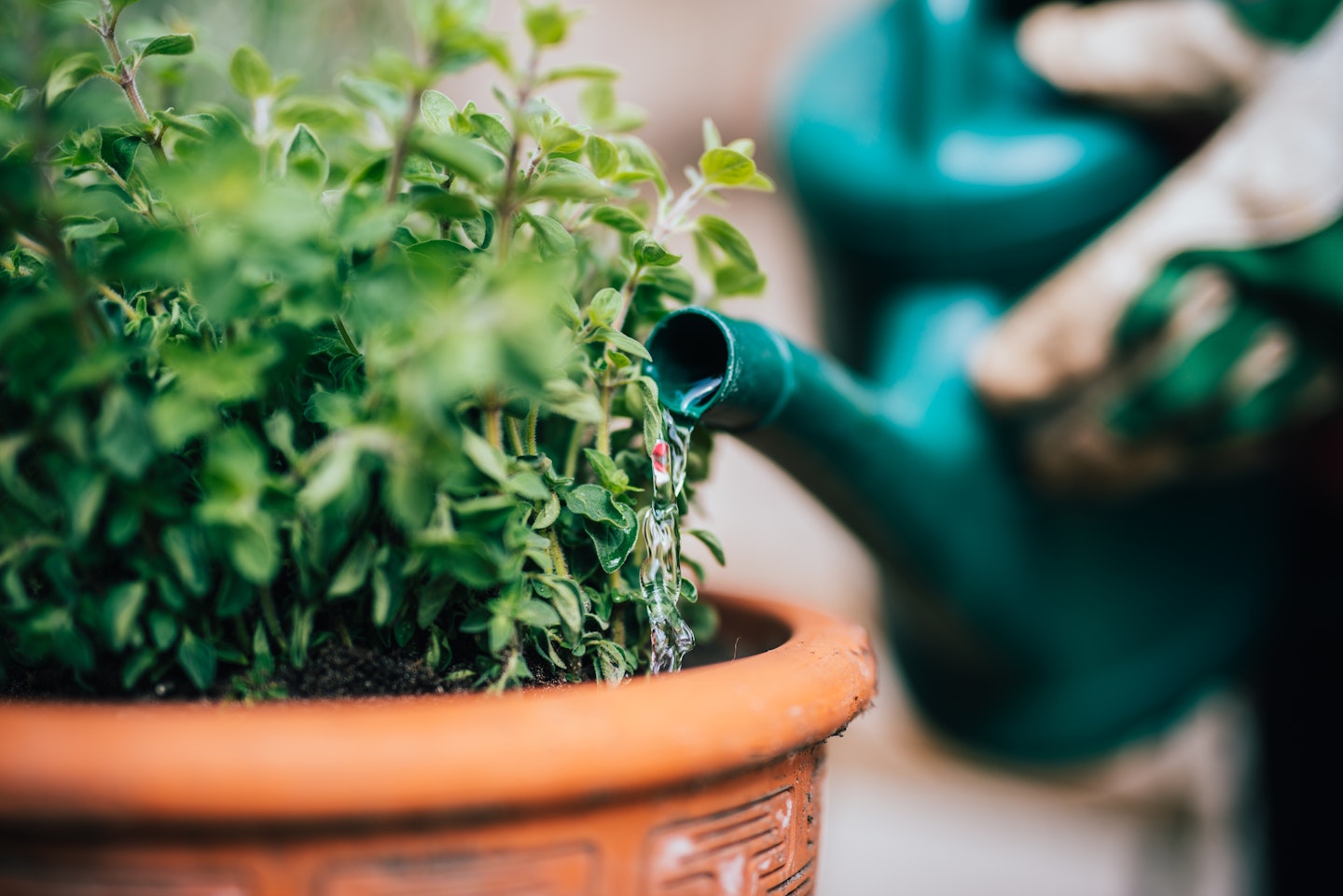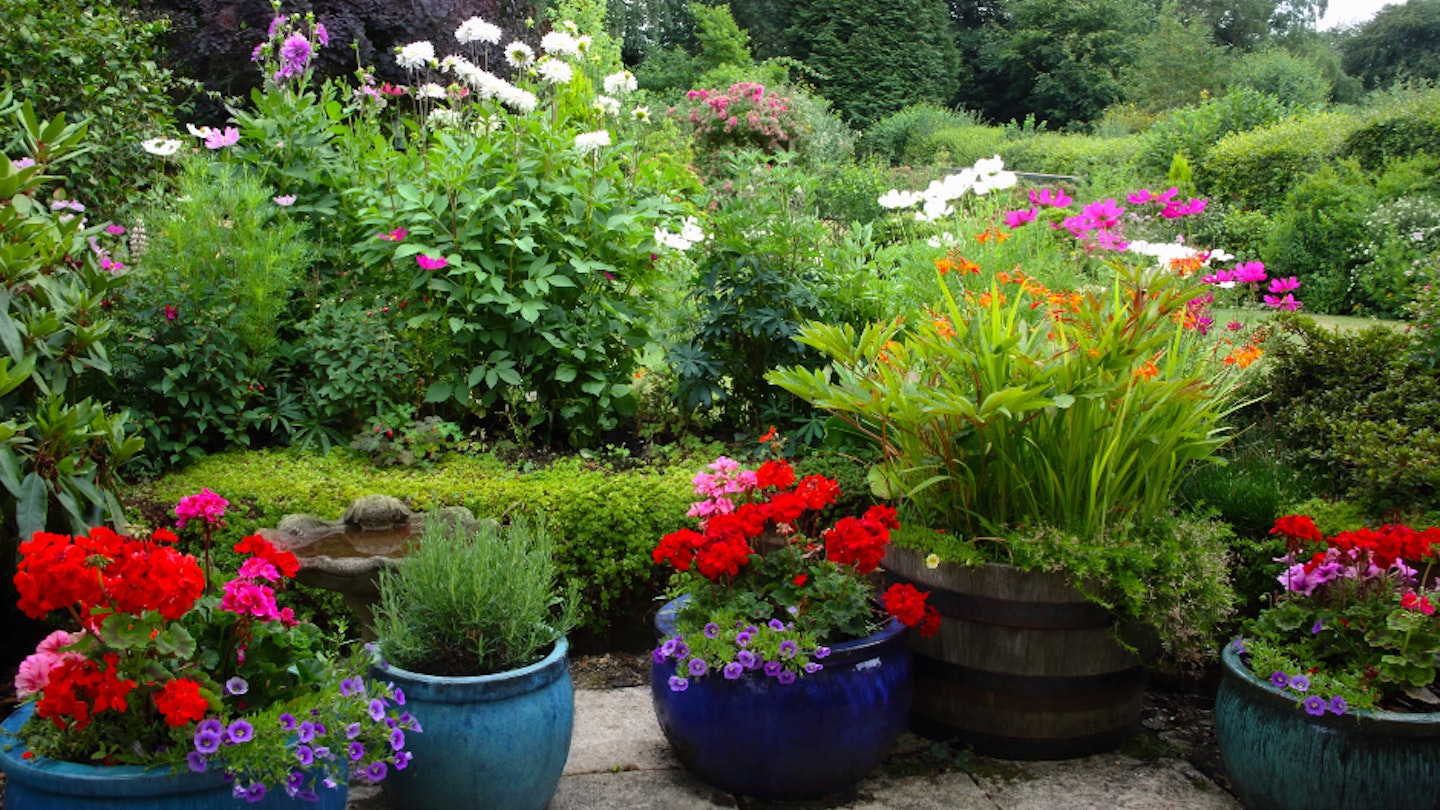Container gardening is a stylish yet practical way of adding impact and appeal to your garden. Pots filled with plants and flowers always look wonderful but the best thing about container gardening is its versatility – it offers flexible growing opportunities no matter the size of your outdoor space and can be used to easily create interchangeable displays that will brighten up your garden year round.
The key to container gardening is maintaining the best conditions for your plants as those grown in a container tend to need a little more TLC than those grown in the ground. Here’s our guide to everything you need to know about container gardening as well as a few tips and tricks to help you get the most out of your plants.
What plants to use
Many different types of plants can be grown in containers from bedding plants to shrubs, herbs, perennials and even trees. Container gardening is also a great way to grow your own fruit and vegetables, especially if your garden is on the smaller side.
Almost any plants can grow well in a container, from fruit and veg to shrubs or even small trees. Always check the packet or labels of your seeds or plants to see where they grow best, and move your pots so they get the appropriate amount of sun or shade.
Use your imagination and use large tubs or raised planter boxes to combine different kinds of plants with different heights and spreads. And don't throw old pots away, give them a new lease of life with spray paint to create a colourful collection with minimal cost to your garden budget.
Something to keep in mind is what you'll do with your plants come winter. Non hardy plants will need to be moved inside for the winter, so make sure you're not planting them in a pot that's too heavy to lift.
Vegetables and herbs
You can grow vegetables in any kind of tub, from fabric pots to gallon containers. Tomatoes, courgettes, spring onions and salad leaves are all easy things to grow in containers without needing to move or repot them too often.
You could get creative and create themed mini vegetable container gardens, such as a salad garden with different lettuces and soft herbs, or a garnish garden with edible flowers and pretty pea shoots.
Annuals
Summer flowering low-maintenance blooms like marigolds, petunias, geraniums and begonias are great choices for a container. Mix and match your plants for a more interesting look, and don't worry if they don't work out, just cut them back and plant another one!
Perennials
Green plants like hostas are a great choice for year-round foliage. Ferns, lavender, lungworts and grasses are also all great options for a variety of container sizes.

How to choose the right container
Containers come in all sorts of shapes, sizes, colours and materials, but it’s important to choose one that gives your plants enough room to grow and also has adequate drainage. It’s easier to grow plants in larger containers as they hold more soil, which takes longer to dry out and resist rapid temperature changes.
It’s also important to bear in mind which plant you want to grow in each container as size and shape of the plant’s root system and how rapidly it grows, as well as the type of plant (perennial, annual or shrub), will all determine the size and shape of the pot.
When it comes to material, there are lots of options such as terracotta, concrete, plastic and fibreglass. Each have their own pros and cons so the right type of container for you will depend on the season, the size and shape of your garden and the plants you want to grow. If you're keen to jazz things up, it's very easy to decorate your terracotta plant pot.

Don't forget! Container drainage
Whatever container you decide to use, it is essential that it has drainage holes so that the soil doesn’t become waterlogged as this could cause your plants to die. There must be enough holes to allow excess water to drain out. If you have a pot that doesn’t have drainage holes, you could drill them yourself.
Choose the right compost
Compost for containers – sometimes known as potting compost – is specially formulated for use in pots and is not the same as garden compost, which isn’t suitable for potting as it is too heavy and may contain weed seeds.
Potting compost, which can be found at your local garden centre, is rich in nutrients, lightweight and retains moisture easily, all of which will give your plants a much-needed boost and help them grow.
Check out the video below for your guide to growing plants in containers
Top tip: Location is key
Where you place your containers is essential to whether your plants thrive. For example, plants that need a lot of sun should be placed in a south or west-facing location to ensure that they get the recommended six hours of sunlight a day. On the other hand, plants that need plenty of shade should of course be placed in the shade.
Ideally, your containers should be sheltered to keep your plants out of the harm of cold, drying winds. Under walls and fences are ideal locations. If your pots are placed on a wall or balcony, ensure they are fixed securely to avoid any nasty accidents.
Taking care of your plants
Plants growing in containers will need watering more often than plants growing in your borders as they don’t have access to as much moisture. Compost can dry out within hours on hot, sunny days so be sure to water your plants day and night, making sure that water soaks through to the plant’s roots.
Spreading a layer of mulch will also help your plants retain moisture but make sure you keep it an inch or two away from plant stems.

As with watering, potted plants will need additional feeding as they have less access to nutrients that plants in the ground. Feed your plants with slow release fertilisers every two weeks and adjust the frequency depending on their response.
Pots and containers will often be the focal point of your garden so keep plants preened to ensure they’re looking their best. Remove tattered leaves and deadheads and prune plants that get leggy or stop blooming. As always, keep an eye out for pests too.
Another bonus of container gardening is it makes weedingmuch more manageable, particularly if you've opted for larger planters or raised beds. There'll be less bending down for one, and less empty soil space for invasive plants to settle in!
